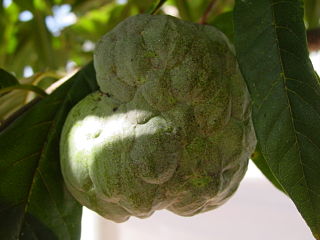| Rhaphiostylis beninensis | |
|---|---|
 | |
| Scientific classification | |
| Kingdom: | Plantae |
| Clade: | Angiosperms |
| Clade: | Eudicots |
| Clade: | Asterids |
| Order: | Metteniusales |
| Family: | Metteniusaceae |
| Genus: | Rhaphiostylis |
| Species: | R. beninensis |
| Binomial name | |
| Rhaphiostylis beninensis | |
| Synonyms | |
| |
Rhaphiostylis beninensis is a woody, sprawling or scrambling glabrous, evergreen shrub or liane native to Tropical Africa, belonging to the family Metteniusaceae, and one of 3 species in the genus Rhaphiostylis. [1] It is traditionally used as an anti-inflammatory by the Bantu people of Africa. [2]

Although tropical Africa is mostly familiar to the West for its rainforests, this ecozone of Africa is far more diverse. While the tropics are thought of as regions with warm to hot moist climates caused by latitude and the tropical rain belt, the geology of areas, particularly mountain chains, and geographical relation to continental and regional scale winds impact the overall parts of areas, also, making the tropics run from arid to humid in West Africa. The area has very serious overpopulation problems.

Metteniusaceae are a family of flowering plants, the only family in the order Metteniusales. It consists of about 10 genera and 50 species of trees, shrubs, and lianas, primarily of the tropics. The family was formerly restricted to just Metteniusa, but it is now expanded with a number of genera that were formerly placed in the widely polyphyletic Icacinaceae.
Contents
Occasionally forming thickets, it is found in or on the margins of rain-forest, where, as a climber, it reaches 10-15m in height, and rarely as a free-standing tree 5-8m. Its bark is smooth and dark grey, while young branches are reddish-brown to purple. Leaves are alternate and elliptic-lanceolate in shape with acuminate apex. Flowers in axillary clusters, white and fragrant. [3] Fruit flattened and sub-reniform, persistent lateral style, reticulate or wrinkled, bright red turning black when ripe. [4]
This species occurs in Liberia, Zambia, Zimbabwe, Mozambique, Senegal, Gambia, Congo and Angola.

Liberia, officially the Republic of Liberia, is a country on the West African coast. It is bordered by Sierra Leone to its northwest, Guinea to its north, Ivory Coast to its east, and the Atlantic Ocean to its south-southwest. It covers an area of 111,369 square kilometers (43,000 sq mi) and has a population of around 4,900,000. English is the official language, but over 20 indigenous languages are spoken, representing the numerous ethnic groups who make up more than 95% of the population. The country's capital and largest city is Monrovia.

Zambia, officially the Republic of Zambia, is a landlocked country in south-central Africa. It neighbours the Democratic Republic of the Congo to the north, Tanzania to the north-east, Malawi to the east, Mozambique to the southeast, Zimbabwe and Botswana to the south, Namibia to the southwest, and Angola to the west. The capital city is Lusaka, located in the south-central part of Zambia. The population is concentrated mainly around Lusaka in the south and the Copperbelt Province to the northwest, the core economic hubs of the country.

Zimbabwe, officially the Republic of Zimbabwe, is a landlocked country located in southern Africa, between the Zambezi and Limpopo Rivers, bordered by South Africa, Botswana, Zambia and Mozambique. The capital and largest city is Harare. A country of roughly 16 million people, Zimbabwe has 16 official languages, with English, Shona, and Ndebele the most commonly used.














